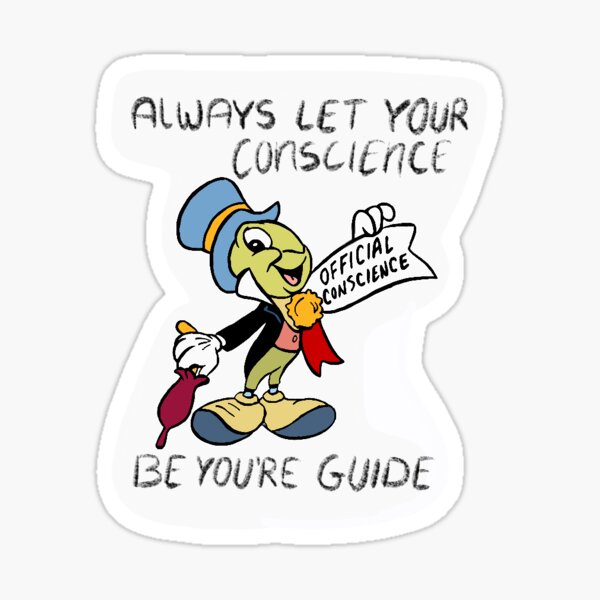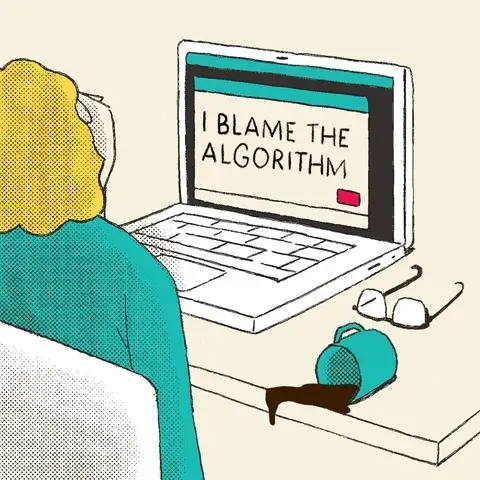Have you ever wondered how intelligent a machine can be? In the world of artificial intelligence (AI), not all AIs are created equal.
From those that can beat you in a game of chess to those that can write an original symphony, AI is revolutionizing the way we interact with technology. But what is the difference between weak AI and strong AI?
And how does traditional AI compare to generative AI that creates art and text?
Join us as we explore the different types of AI and how they are transforming our lives and businesses!
Types of Artificial Intelligence
Artificial intelligence can be classified in various ways, but one of the most fundamental distinctions is between weak AI and strong AI. Additionally, AI can also be categorized based on its level of functionality and awareness into reactive, limited memory, theory of mind, and self-aware. Let's explore each of these categories to better understand their differences and applications.
Weak AI vs. Strong AI
Weak AI: Also known as narrow AI, it is designed and trained to perform a specific task. Common examples include virtual assistants like Siri and Alexa, which can answer questions, send messages, and control smart devices but cannot perform tasks outside of their specific programming.
Weak AI is excellent for well-defined tasks and can outperform humans in them, such as playing chess or recommending movies.
Strong AI: Also known as general AI, this form of artificial intelligence has the ability to understand, learn, and apply knowledge in a generalized way, similar to human intelligence.
Strong AI is still theoretical and has not yet been achieved. Imagine an AI that can not only answer questions in multiple contexts but also reason, plan, and perform any intellectual task that a human can.
Types of AI by Functionality
Reactive AI: This type of AI has no memory and cannot use past experiences to influence current decisions.
Its behavior is purely reactive, based on present situations.
A classic example is IBM's Deep Blue, which defeated world chess champion Garry Kasparov in 1997.
Deep Blue analyzes the pieces on the board and makes decisions based solely on the current state of the game.
Limited Memory AI: This type of AI can use historical data to make decisions.
It includes most of the current AI applications, such as autonomous vehicles that observe the environment, identify patterns, and make decisions based on real-time and recent past information.
Theory of Mind AI: This type of AI, still in development, will be able to understand and process human thoughts and emotions.
It is named after the theory of mind, a capability humans develop to attribute mental states to others. These AIs could understand and anticipate human needs, beliefs, and emotions, making them significantly more effective in social interactions.
Self-Aware AI: The most advanced and currently theoretical level of AI. A self-aware AI would not only understand human emotions and mental states but also have its own form of consciousness.
This type of AI would be capable of reflecting on itself and its existence, similar to how humans are aware of their being.
With these concepts clear, we can delve into how traditional AI and generative AI compare, and what their applications and benefits are in different sectors. Let's dive in!
Comparison Between Traditional AI and Generative AI
Artificial intelligence (AI) has advanced spectacularly in recent years, leading to two distinct but complementary approaches: traditional AI and generative AI. Each has its own goals, methods, and unique applications. In this section, we will explore the differences between these two types of AI, examples of their applications, and their respective advantages and disadvantages.
Differences in Goals and Methods
Traditional AI:
- Goals: Traditional AI focuses on specific and well-defined tasks, such as voice recognition, fraud detection, and predictive analytics. Its main objective is to improve efficiency and accuracy in automated tasks.
- Methods: It uses supervised and unsupervised learning algorithms, neural networks, and statistical analysis techniques. These methods are trained with large volumes of labeled data to identify patterns and make predictions. IA tradicional se centra en tareas específicas y bien definidas, como reconocimiento de voz, detección de fraudes y análisis predictivo. Su objetivo principal es mejorar la eficiencia y la precisión en tareas automatizadas.
Generative AI:
- Goals: Generative AI aims to create new content that did not previously exist. This includes generating text, images, music, and other types of creative content. Its goal is to mimic human creativity and produce innovative results.

- Methods: It uses advanced models like Generative Adversarial Networks (GANs) and Transformers (like GPT-4). These models are trained on large datasets to learn how to generate coherent and realistic content from descriptions or examples.
Examples of Applications for Each Type
Traditional AI Applications:
- Healthcare: Disease diagnosis through medical imaging and patient data analysis.
- Finance: Fraud detection, risk analysis, and algorithmic trading.
- Retail: Inventory management, product recommendations, and supply chain optimization.
Generative AI Applications:
- Art and Design: Creation of digital artwork, fashion design, and graphics generation.
- Marketing: Content creation for advertisements, blog writing, and personalized marketing campaigns.
- Entertainment: Music composition, script generation, and character development for video games.
Advantages and Disadvantages of Both Approaches
Traditional AI:
- Advantages:
- High precision in specific tasks.
- Efficiency and speed in processing large volumes of data.
- Stability and consistency in results.
- Disadvantages:
- Limited to tasks for which it was trained.
- Requires labeled and specific data for training.
- Less adaptable to new problems or contexts.
Generative AI:
- Advantages:
- Ability to create original and diverse content.
- Innovation in creative and entertainment fields.
- Flexibility to adapt to different contexts and needs.
- Disadvantages:
- Quality and coherence of content may vary.
- Requires large volumes of data to train models.
- Ethical and intellectual property challenges associated with generated content.
Both AI approaches have their own strengths and limitations, and the choice between them depends on the specific context and goals.
While traditional AI focuses on accuracy and efficiency in well-defined tasks, generative AI opens new possibilities in content creation and innovation. Now, let's delve deeper into how these types of AI are applied across different sectors.
Applications of Traditional AI and Generative AI
Artificial intelligence is transforming multiple sectors with its unique capabilities. Both traditional AI and generative AI offer innovative solutions that drive efficiency and creativity in various industries. Let's discover where and how these two AI approaches are applied.
Sectors where Traditional AI is Applied
Healthcare:
- Medical Diagnosis: AI assists doctors in identifying diseases from medical images such as X-rays and MRIs. Imagine AI as an on-call doctor who never sleeps or tires.
- Virtual Assistants: Systems like IBM Watson help healthcare professionals make informed decisions by analyzing vast amounts of medical data.
Finance:
- Fraud Detection: AI algorithms can identify suspicious transactions in real-time, protecting both banks and customers. Think of AI as a financial detective who doesn't let any clue slip by.
- Investment Management: AI can analyze market data and predict trends, helping investors make more informed decisions.
Retail:
- Inventory Management: AI systems can forecast product demand and optimize inventory levels, ensuring shelves are never empty (or too full).
- Customer Experience Personalization: AI-powered recommendation engines suggest products that may interest you, almost as if they have a sixth sense.
Sectors where Generative AI is Applied
Art and Design:
- Digital Art Creation: Tools like DALL-E can generate unique images from textual descriptions. Ever wanted to see an "avocado that is also a chair"? DALL-E can make it happen.
- Fashion Design: AI can design innovative and personalized clothing, revolutionizing the fashion industry.erramientas como DALL-E pueden generar imágenes únicas a partir de descripciones textuales. ¡Es como tener un Picasso digital a tu disposición!
Marketing:
- Content Generation: AI like GPT-4 can create advertising copy, blog posts, and social media content that engages and captivates the audience. Yes, it could even be writing this post... well, not this one specifically.
- Campaign Personalization: Generative AI can create personalized ads that resonate with different market segments, increasing campaign effectiveness.
Entertainment:
- Music Composition: AI like Amper Music can compose original melodies for soundtracks, jingles, and more. It's like having Mozart on your laptop!
- Video Game Development: AI can generate landscapes, characters, and dialogues, creating more immersive and varied gaming experiences.
Now that we know the applications of traditional AI and generative AI, it's clear that both approaches are revolutionizing their respective fields.
Who would have thought we could have AI that not only makes our work easier but can also create works of art or compose music?
Let's take a look at some specific examples of generative AI in action!
Examples of Generative AI
Generative AI is like having an tireless and always inspired creative assistant. From generating stunning images to composing original music, this technology is taking creativity to new levels. Let's see some amazing examples!
Image Generation
DALL-E: This OpenAI model can generate images from textual descriptions. Ever wanted to see an "avocado that is also a chair"? DALL-E can make it happen.
It's more creative than your ex when they tried to do something special for your anniversary!
MidJourney: A platform that allows users to generate digital art using artificial intelligence. You can create anything from futuristic landscapes to realistic portraits with just a few words. It's like having a digital Da Vinci at your disposal.
Text Generation
ChatGPT: ChatGPT can write articles, answer questions, and even hold fluent conversations. Ideal for generating blog content, drafting emails, or even writing scripts.
And yes, sometimes it can be wittier than your friend's mother, who always has the perfect comment at every family gathering.
GPT-4: The latest version of OpenAI's language model, capable of generating coherent and contextually relevant texts for a wide range of applications. From technical writing to poetry, GPT-4 can do it all, borrowing a bit of genius from every famous writer that ever existed.
Music and Composition
Amper Music: An AI-assisted music composition tool that allows users to create original melodies without prior music experience. It's like having Beethoven in your pocket, ready to compose the soundtrack of your life.
OpenAI Jukebox: This model can generate music in different styles and genres, even mimicking famous artists.
Want a new song from your favorite band that broke up years ago? Jukebox can do it, almost like stealing notes directly from their old scores.
Generative AI is not only changing how we create content but also opening doors to new creative possibilities.
Whether you need a unique image, compelling text, or an original melody, generative AI is here to help unleash your creative potential, and perhaps, be more inventive than any human you know.
Benefits of Generative AI
Generative AI is revolutionizing various industries by offering endless creative and practical possibilities.
From task automation to advanced personalization, this technology is changing how businesses and individuals create and consume content.
Let's explore some of the standout benefits of generative AI.
Limitless Innovation and Creativity
Generative AI allows users to explore new creative frontiers without traditional limitations.
Artists can generate unique digital artwork, musicians can compose original melodies, and writers can produce captivating texts in seconds. It's like having a creative team available 24/7, without the need for coffee!
Automation of Creative Tasks
Tasks that once required hours of human work can now be automated with generative AI. For example:
- Graphic Design: Generating logos, banners, and promotional graphics quickly and efficiently.
- Content Writing: Creating articles, social media posts, and product descriptions with minimal effort.
- Music Production: Composing background tracks for videos, podcasts, and other multimedia projects.
This not only saves time but also allows professionals to focus on more strategic and complex aspects of their work.
Advanced Personalization in Marketing and Products
Generative AI can analyze large volumes of data to create highly personalized content that resonates with different audience segments. This includes:
- Personalized Ads: Creating advertising campaigns tailored to the interests and behaviors of each user.
- Product Recommendations: Generating precise recommendations based on customer purchase history and preferences.
- Interactive Experiences: Developing chatbots and virtual assistants that offer personalized and contextual responses.
Imagine having a marketing assistant who not only understands each customer but also can design specific messages for them. It's almost like having a superpower in the world of marketing!

Boosting Education and Entertainment
Generative AI is also transforming the educational sector and entertainment by providing innovative tools for teaching and content creation. For instance:
- Education: Generating personalized educational materials such as quizzes, exercises, and detailed explanations tailored to each student.
- Entertainment: Creating interactive stories, unique characters, and immersive gaming experiences.
These advancements not only enhance content quality but also increase user engagement and satisfaction.
Generative AI offers benefits that extend beyond mere automation. By unlocking creative potential and offering customized solutions, it is changing how we work, learn, and entertain ourselves.
However, like any powerful technology, it also comes with its challenges. In the following section, we will explore some of the limitations of generative AI and how we can address them.
Limitations of Generative AI
While generative AI offers multiple benefits and creative possibilities, it also faces certain limitations that need to be considered. These limitations can influence the quality of generated content, the reliance on data, and the ethical challenges that arise with its use.
Quality and Coherence in Content Generation
One of the main limitations of generative AI is the variability in the quality and coherence of the produced content.

AI can generate impressive text, images, and music, it doesn't always guarantee perfect results or meet human expectations.
- Incoherent Texts: Sometimes, language models can produce sentences that don't make sense or are grammatically incorrect.
- Flawed Images: Image generation tools may produce visual artifacts or unrealistic details.
- Disordered Music: AI-generated compositions may lack the structure and harmony characteristic of human works.
It's like ordering a latte with foam art and ending up with something more like a smudge than a heart. It can be frustrating, but with adjustments and refinements, results improve.
Dependence on Large Volumes of Data
The effectiveness of generative AI largely depends on the quantity and quality of data used to train the models.

Without access to large datasets, AI may struggle to generate relevant and high-quality content.
- Insufficient Data: Without enough data, AI can struggle to learn complex patterns needed to generate compelling content.
- Biased Data: If training data contains biases, generative AI may reproduce and amplify those biases in its output.
This is akin to trying to cook a complicated recipe without all the necessary ingredients—the final result may not be as flavorful as expected.
Ethical and Intellectual Property Challenges
The use of generative AI raises significant ethical and legal issues, particularly concerning intellectual property and responsible technology use.

- Copyright: Determining ownership of works created by AI can be complicated. Who owns the rights to a song composed by an AI?
- Unintentional plagiarism: AI may generate content that unintentionally resembles existing works, leading to accusations of plagiarism.
- Misuse: Generative AI can be used to create misleading or harmful content, such as fake news or deepfakes.
It's like having a superpower: with great power comes great responsibility. Establishing regulations and ethical practices is crucial to ensure that generative AI is used fairly and beneficially.
| Topic | Description |
|---|---|
| Applications of Traditional AI | Health: Medical diagnosis, virtual assistants. |
| Finance: Fraud detection, investment management. | |
| Retail: Inventory management, customer experience personalization. | |
| Applications of Generative AI | Art and Design: Digital art creation, fashion design. |
| Marketing: Content generation, campaign personalization. | |
| Entertainment: Musical composition, video game development.. | |
| Examples of Generative AI | Image Generation: DALL-E, MidJourney. |
| Text Generation: ChatGPT, GPT-4. Music and Composition: Amper Music, OpenAI Jukebox. |
|
| Benefits of Generative AI | Innovation and Creativity: Unlimited creative exploration. Automation of Creative Tasks: Time savings and focus on strategic tasks. Advanced Personalization: Highly personalized ads and products. |
| Limitations of Generative AI | Quality and Consistency: Variability in content quality. Data Dependency: Need for large volumes of data and risk of biases. |
| Ethical Challenges: Copyright issues and malicious use. | |
| The Future of Generative AI | Technological Trends: Improvements in quality, advanced personalization, multisensory integration. |
| Impact on Industries: Entertainment, education, marketing, and advertising. | |
| Workplace Changes: New job opportunities and retraining. |
The future of generative AI
The future of generative AI is promising and full of potential. As technology continues to advance, we will witness exciting developments that could transform entire industries and change the way we interact with the world.
Emerging trends and technological developments
- Quality improvement: With advances in algorithms and learning techniques, the quality of content generated by AI will continue to improve. Expect to see fewer errors and more coherence in generated texts, images, and music.
- Increased personalization: AI will be capable of offering even more sophisticated levels of personalization, creating unique experiences tailored to individual user preferences.
- Multisensory integration: Generative AI could combine different types of content (text, images, sound) to create immersive and multisensory experiences
Potential impacts on various industries
Generative AI will have a significant impact on various industries, from entertainment to education and beyond.
- Entertainment: Creation of video games, movies, and music that adapt in real-time to user preferences.
- Education: Development of personalized and adaptive educational materials that enhance learning and student engagement.
- Marketing and advertising: Highly personalized and dynamic advertising campaigns that change based on user interaction.
How generative AI can change the job landscape
- New job opportunities: Demand for AI specialists, digital experience designers, and curators of AI-generated content will increase.
- Automation of creative tasks: Repetitive and routine tasks in creative fields will be automated, allowing professionals to focus on more strategic and original aspects of their work.
- Retraining and adaptation: Workers will need to acquire new skills and knowledge to collaborate effectively with generative AI and maximize its capabilities.
In summary, generative AI is poised to revolutionize multiple aspects of our daily lives and professional environments.
While it faces challenges and limitations, its benefits and transformational potential are immense. The future of creativity and innovation is here, and it's more exciting than ever
.png)





















